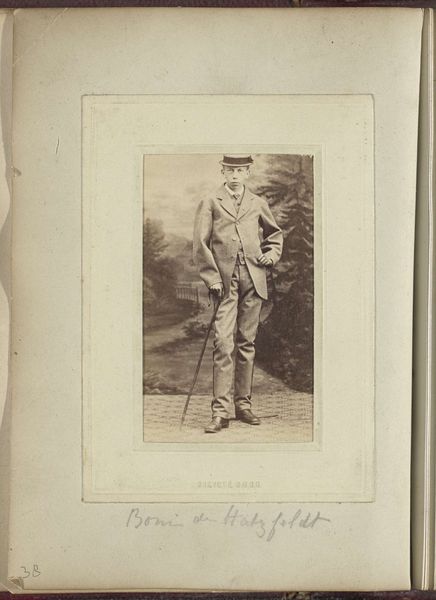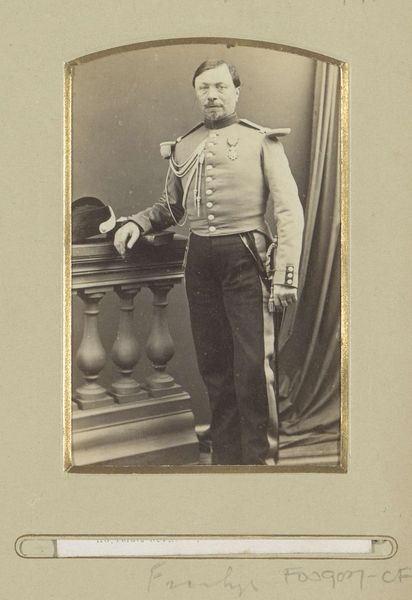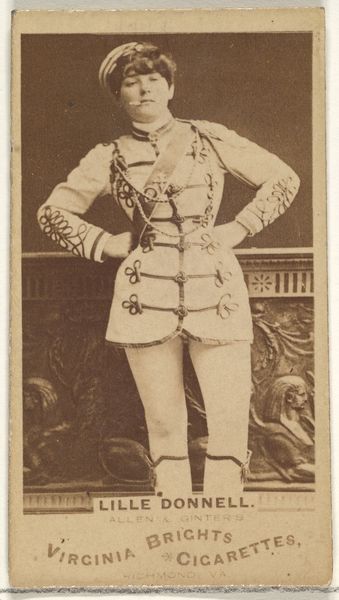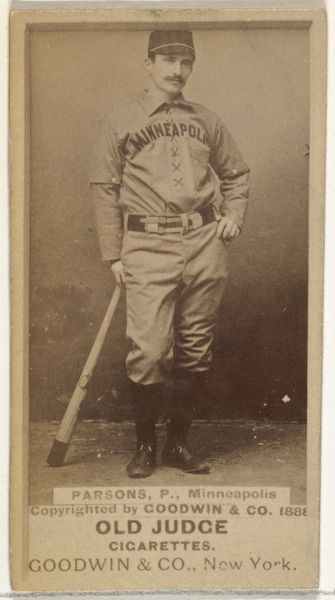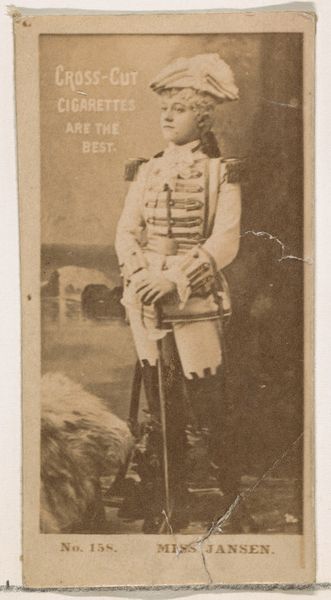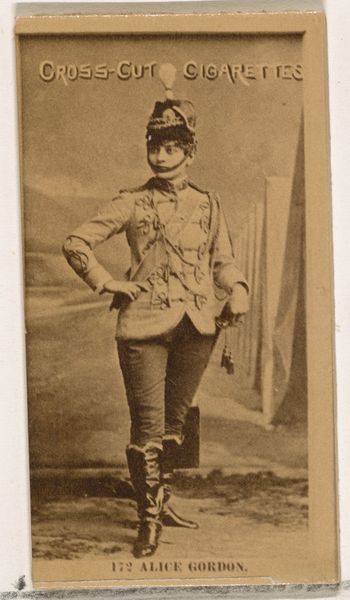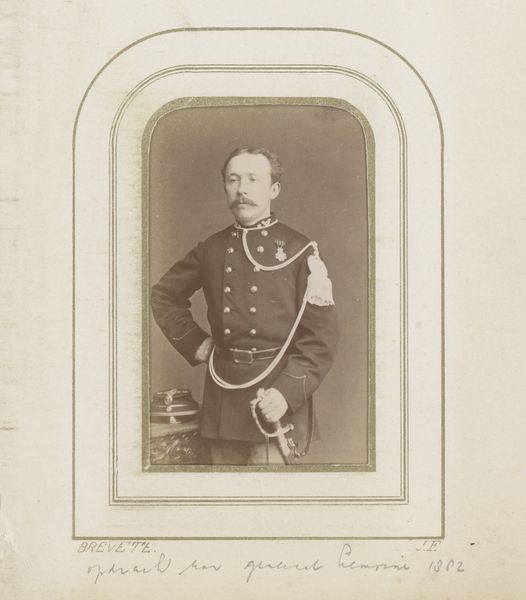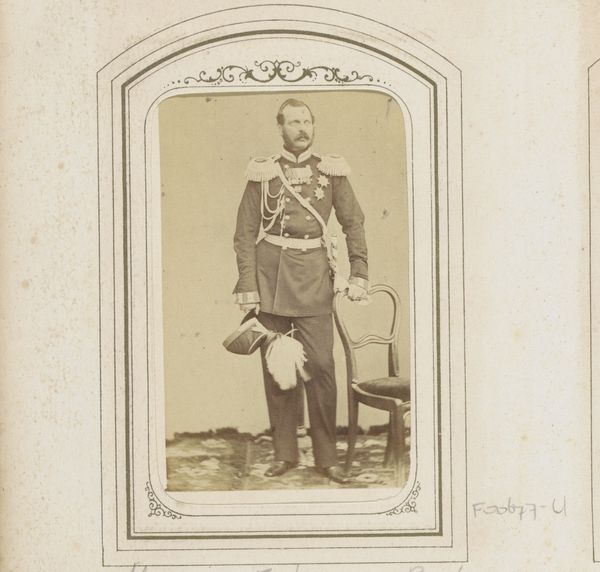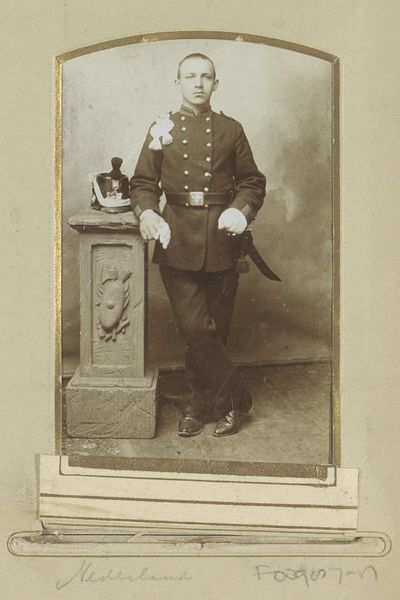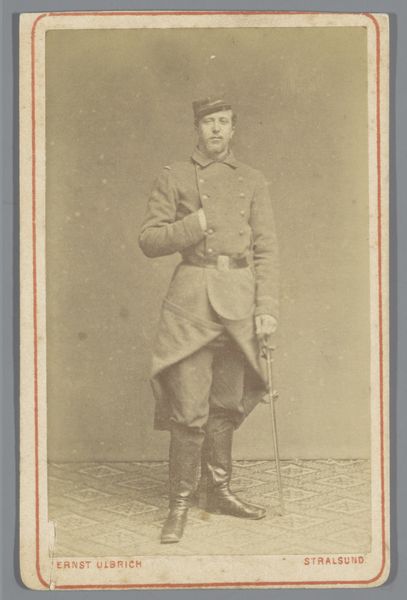
Card Number 56, Miss Stanley, from the Actors and Actresses series (N145-2) issued by Duke Sons & Co. to promote Cross Cut Cigarettes 1880s
0:00
0:00
print, photography
#
portrait
# print
#
figuration
#
photography
#
genre-painting
Dimensions: Sheet: 2 5/8 × 1 7/16 in. (6.6 × 3.7 cm)
Copyright: Public Domain
Editor: Here we have an advertising card from the 1880s, produced by W. Duke, Sons & Co. for Cross Cut Cigarettes. It features a photograph of Miss Stanley, an actress, in what appears to be a military costume. The sepia tone gives it a vintage feel. What can you tell me about the role of celebrity endorsements in this period? Curator: This image provides a fascinating glimpse into the evolving relationship between commercial culture, celebrity, and public image in the late 19th century. Before mass media as we know it, these cards offered a way for people to connect with performers they admired. The question becomes: What did associating Miss Stanley with Cross Cut Cigarettes *do* for both the product and the performer? Editor: That’s a good question! Did the rise of commercial images influence stage performance and vice versa? Curator: Absolutely. Actors understood the value of visibility and endorsements became a powerful way to build recognition and generate revenue beyond the stage. And from the company's perspective, celebrity gave products an aspirational aura, suggesting that consumers could align themselves with glamorous figures simply by purchasing their brand of cigarettes. We might also ask: Who was Miss Stanley performing for *here* and *how* does that affect how the viewer received her message? Editor: So it’s a constructed persona, both for the stage and the advertisement? Almost a double performance? Curator: Precisely. And this highlights how these seemingly simple advertising cards are a rich source for understanding the social and economic forces shaping visual culture during this era. Think about how this strategy evolved to current forms of advertising. Editor: It’s interesting to think about how little has changed in some ways. I’ll definitely be looking at advertising differently now!
Comments
No comments
Be the first to comment and join the conversation on the ultimate creative platform.

